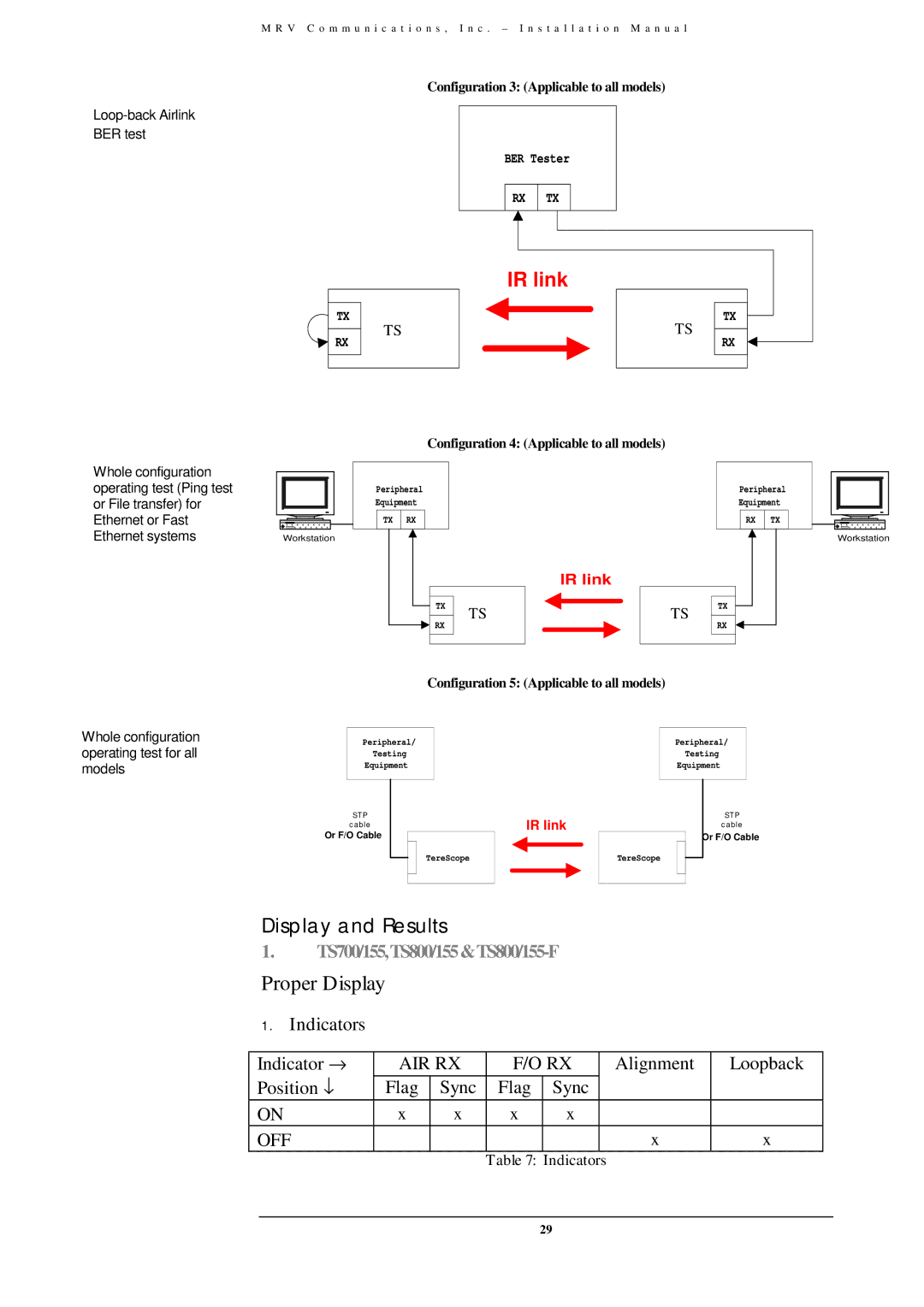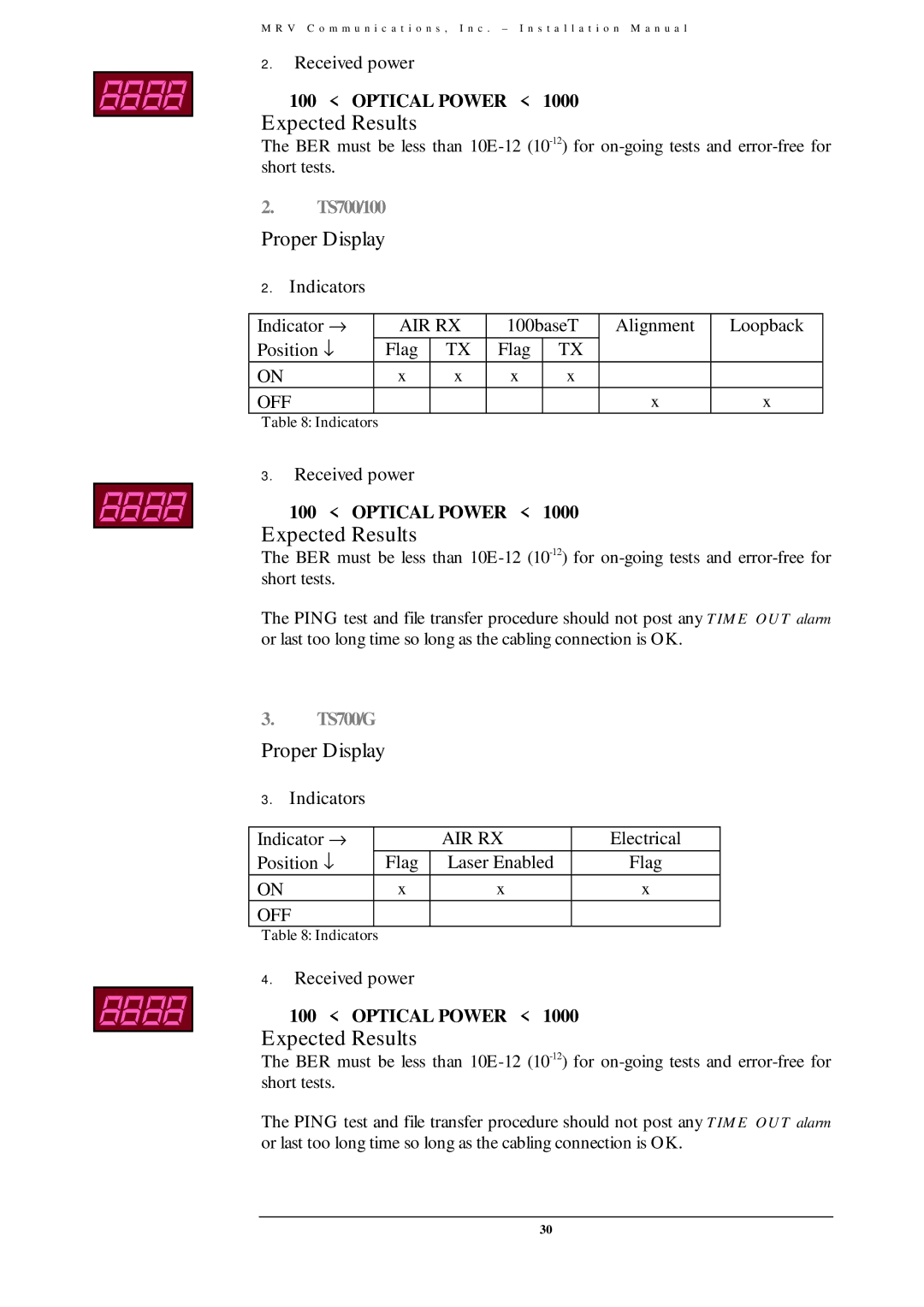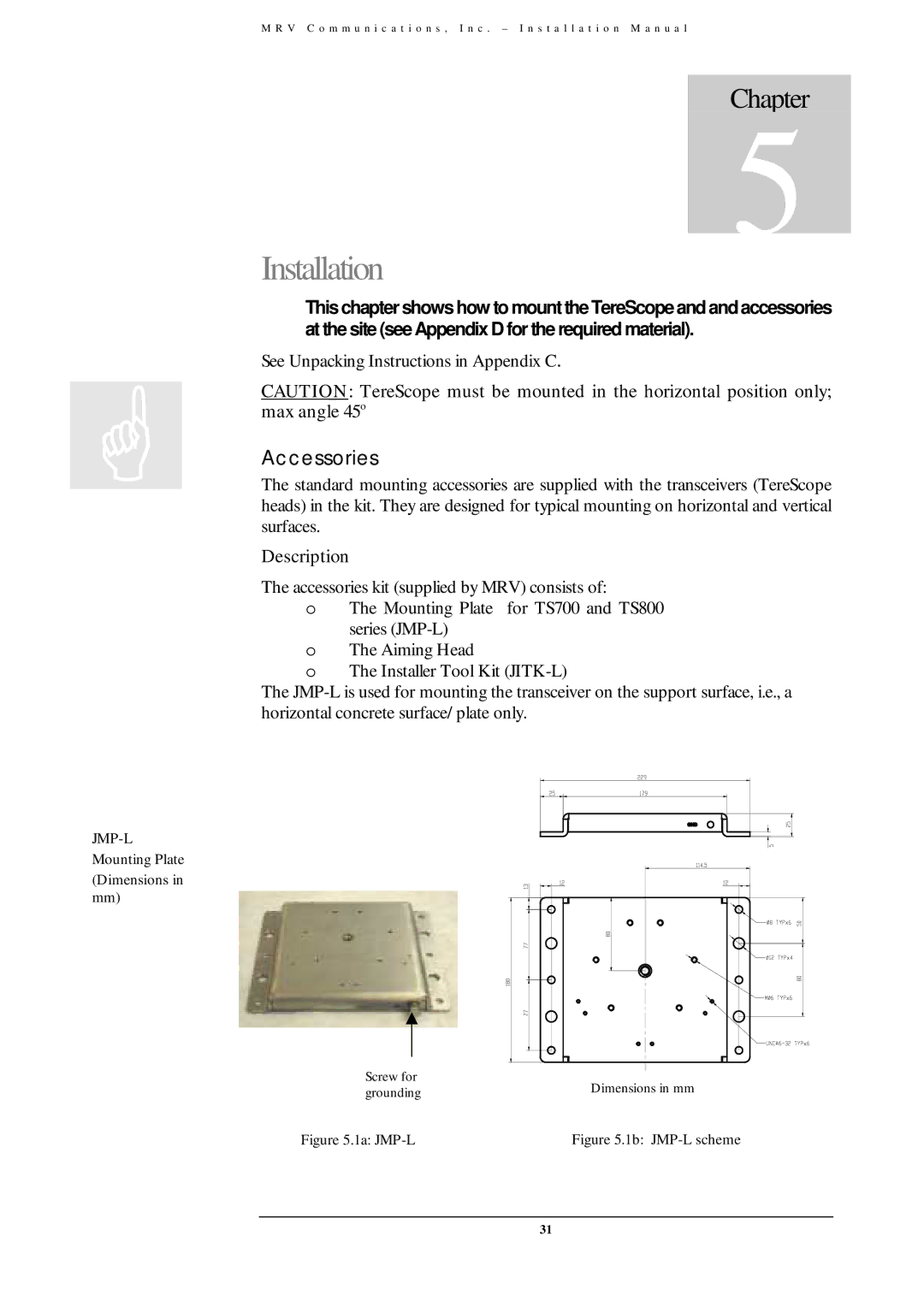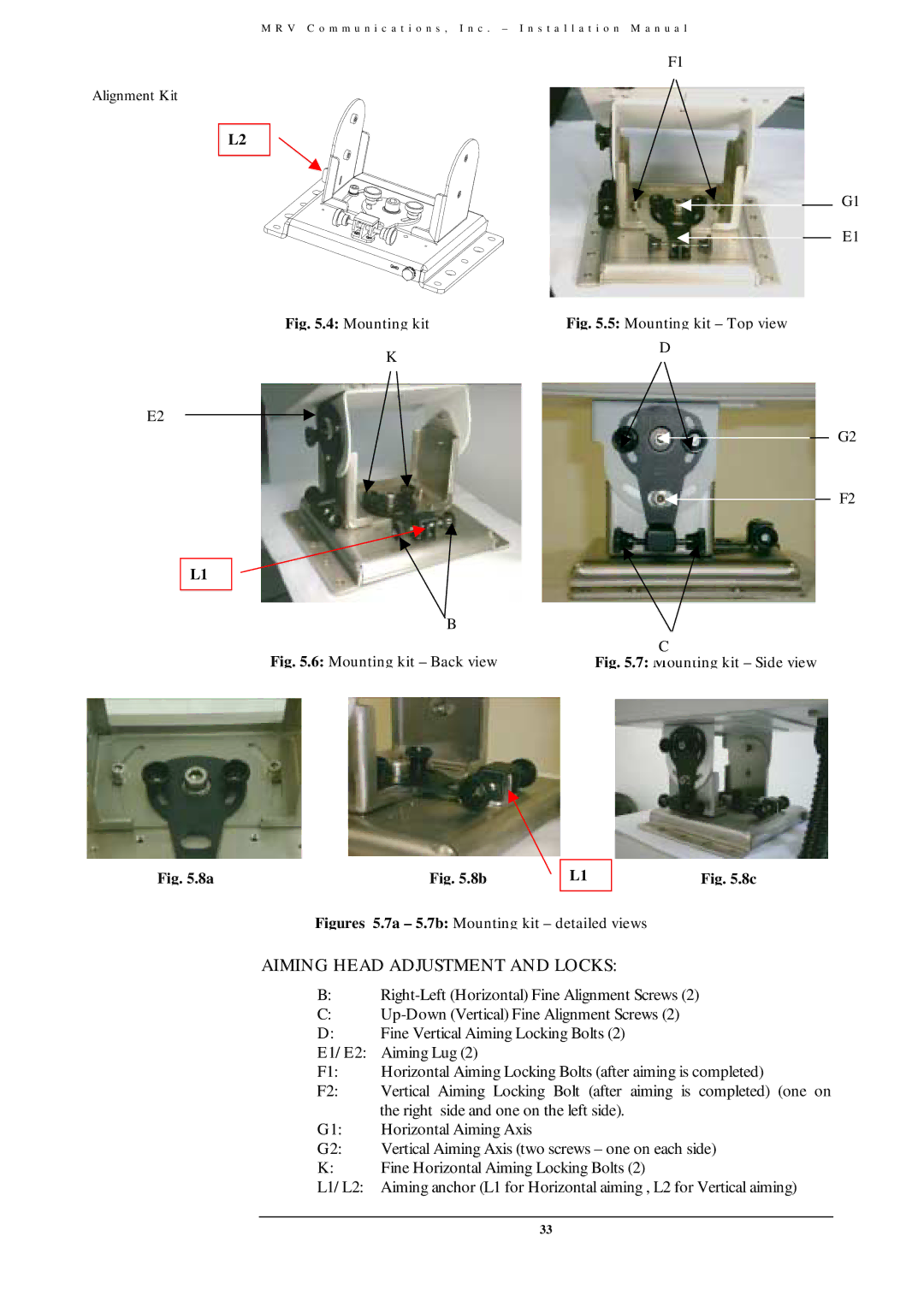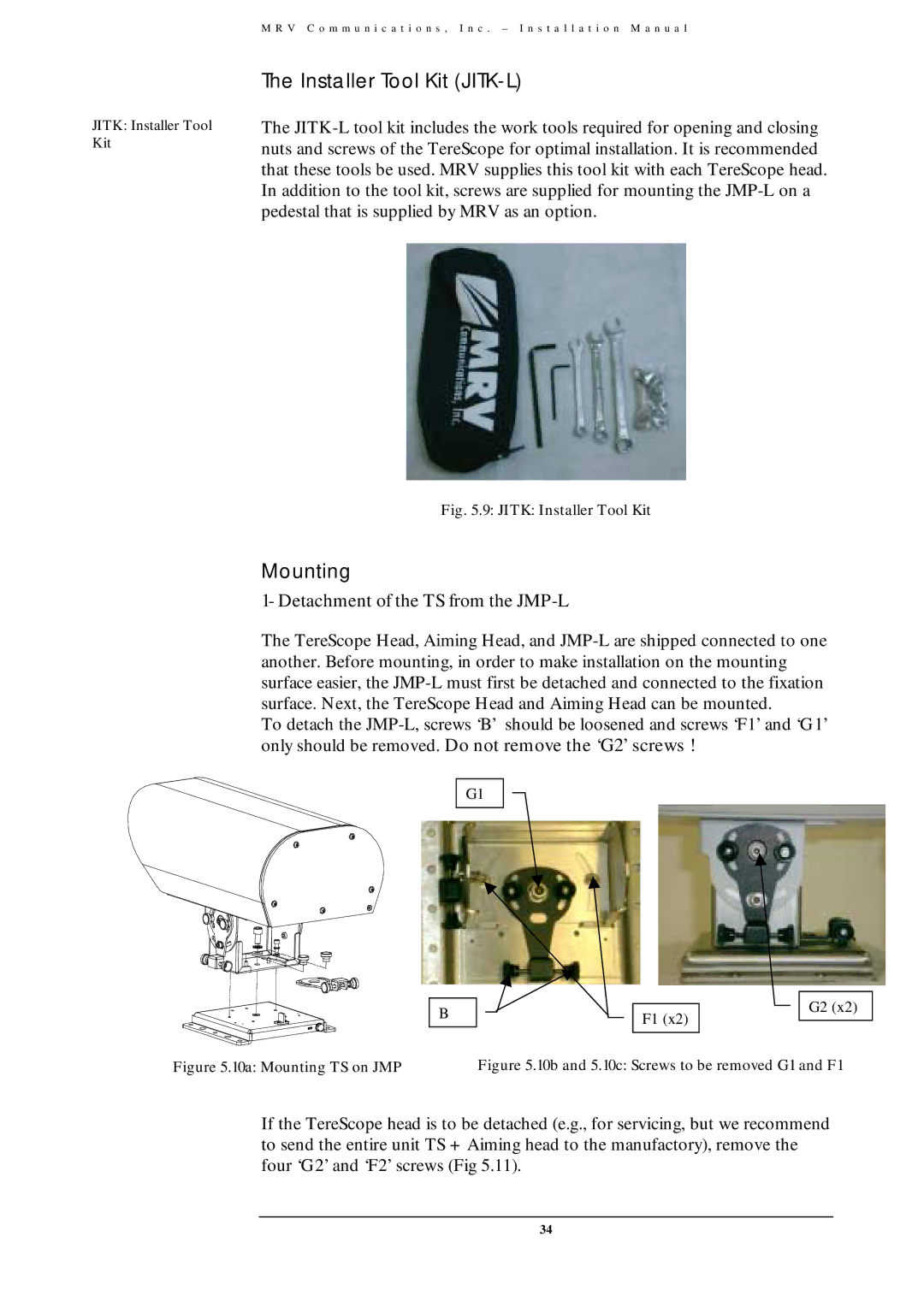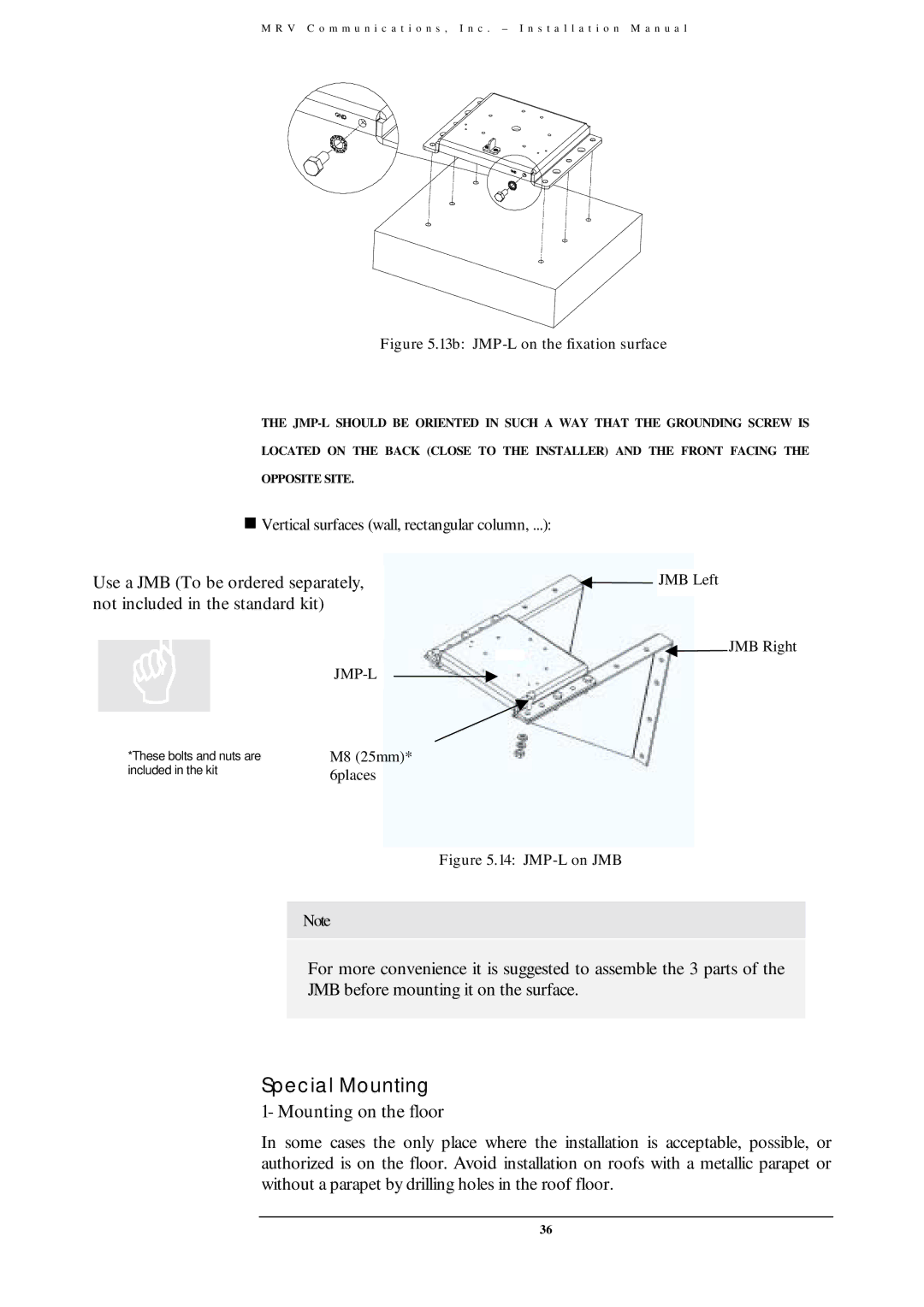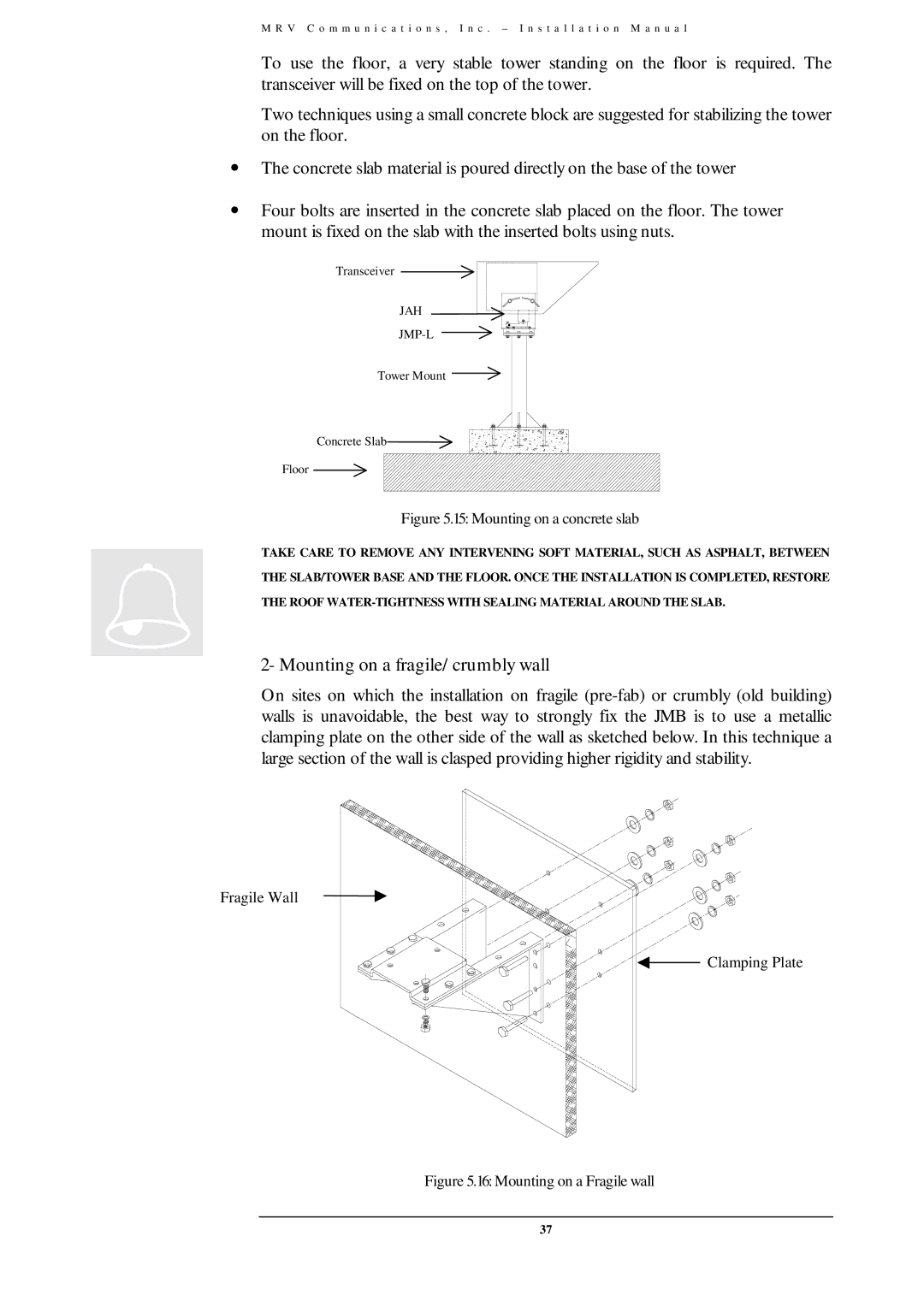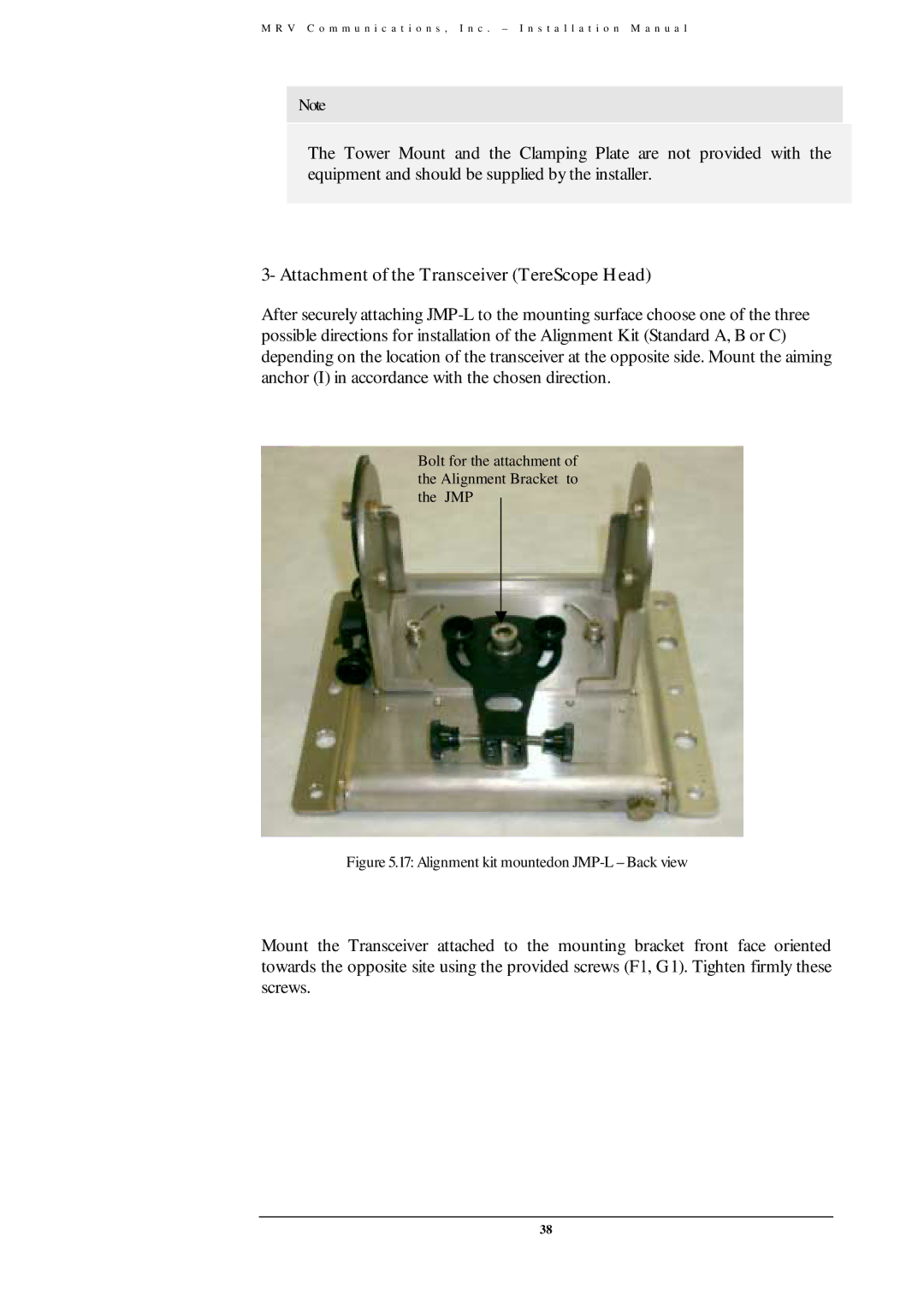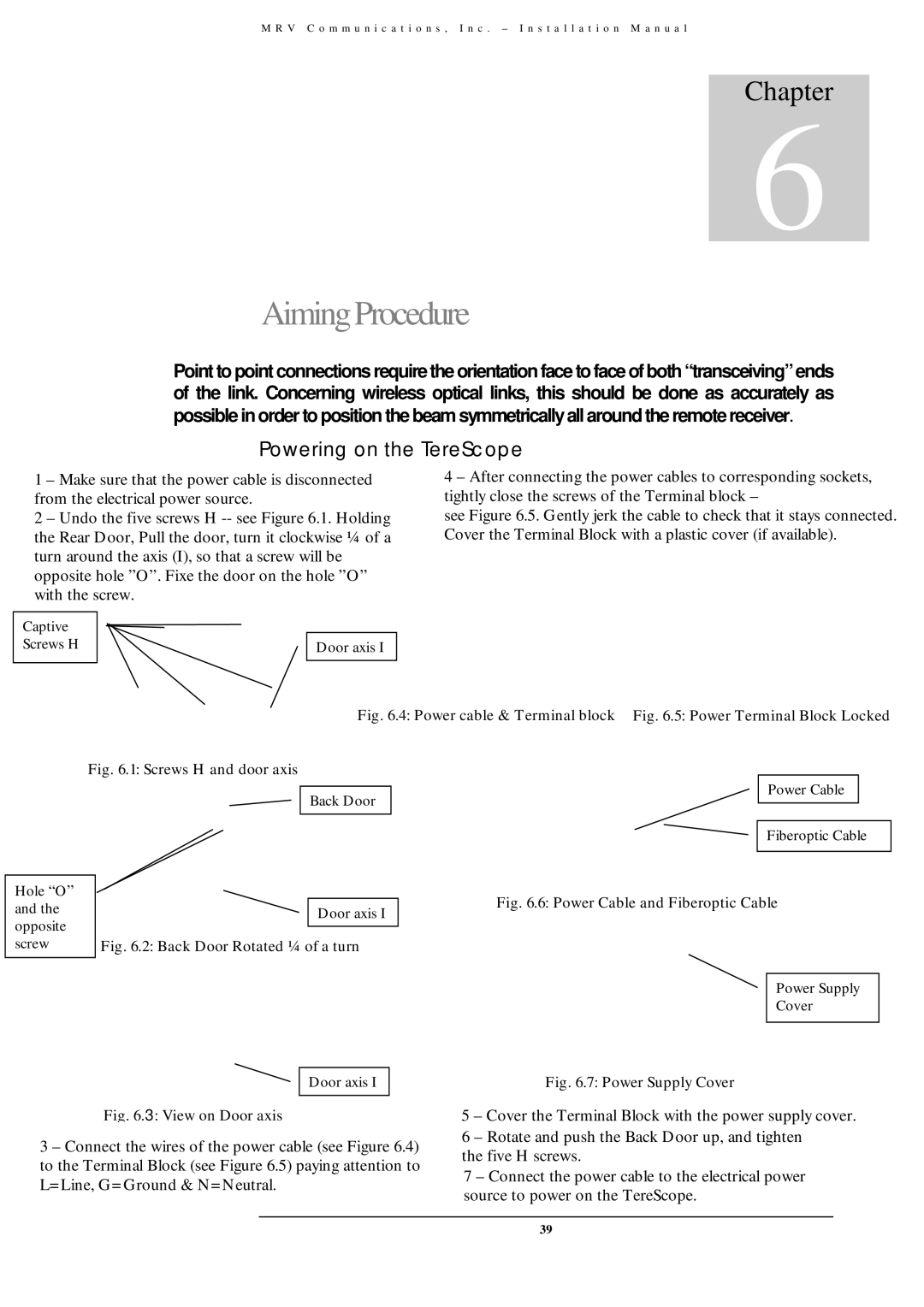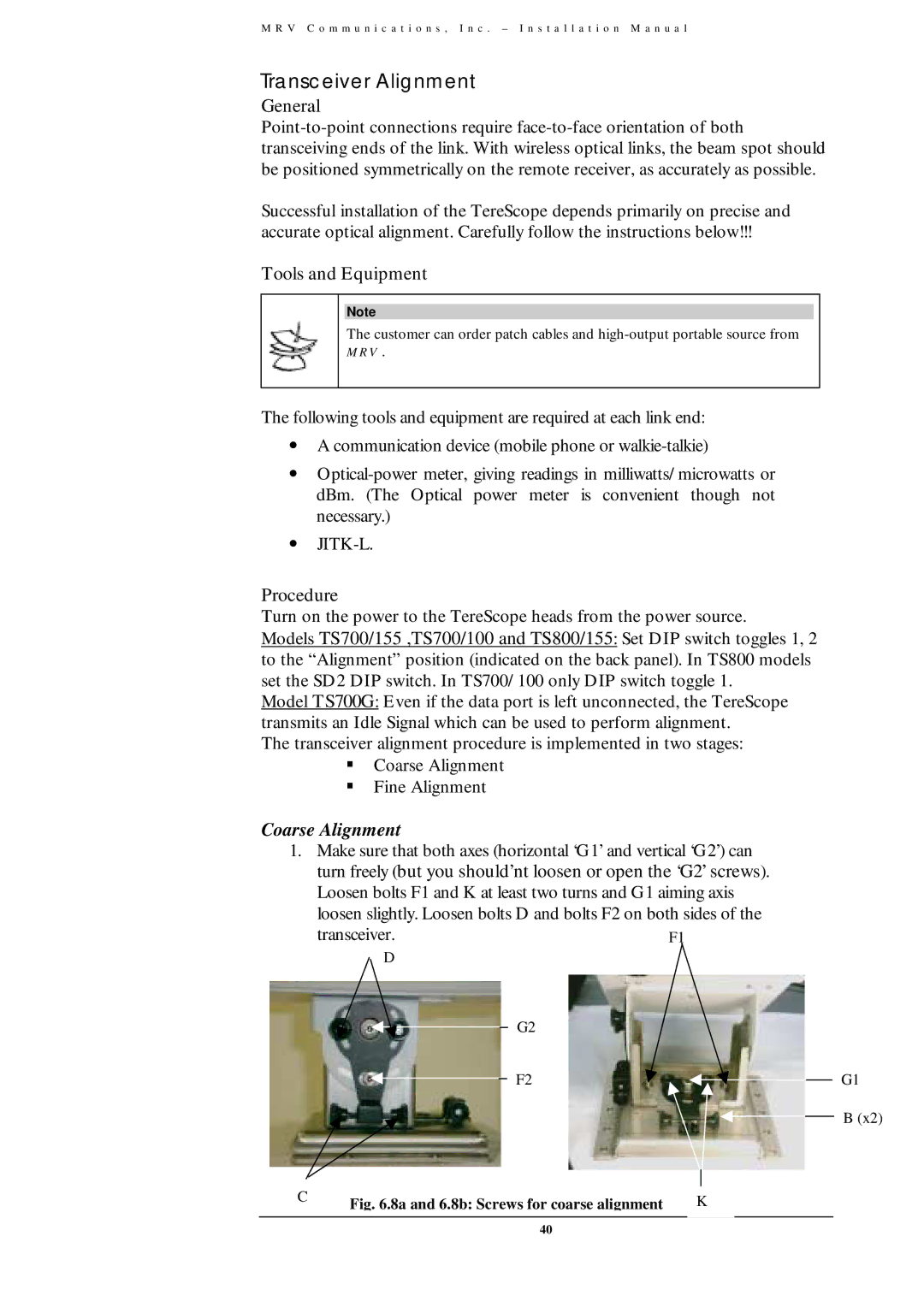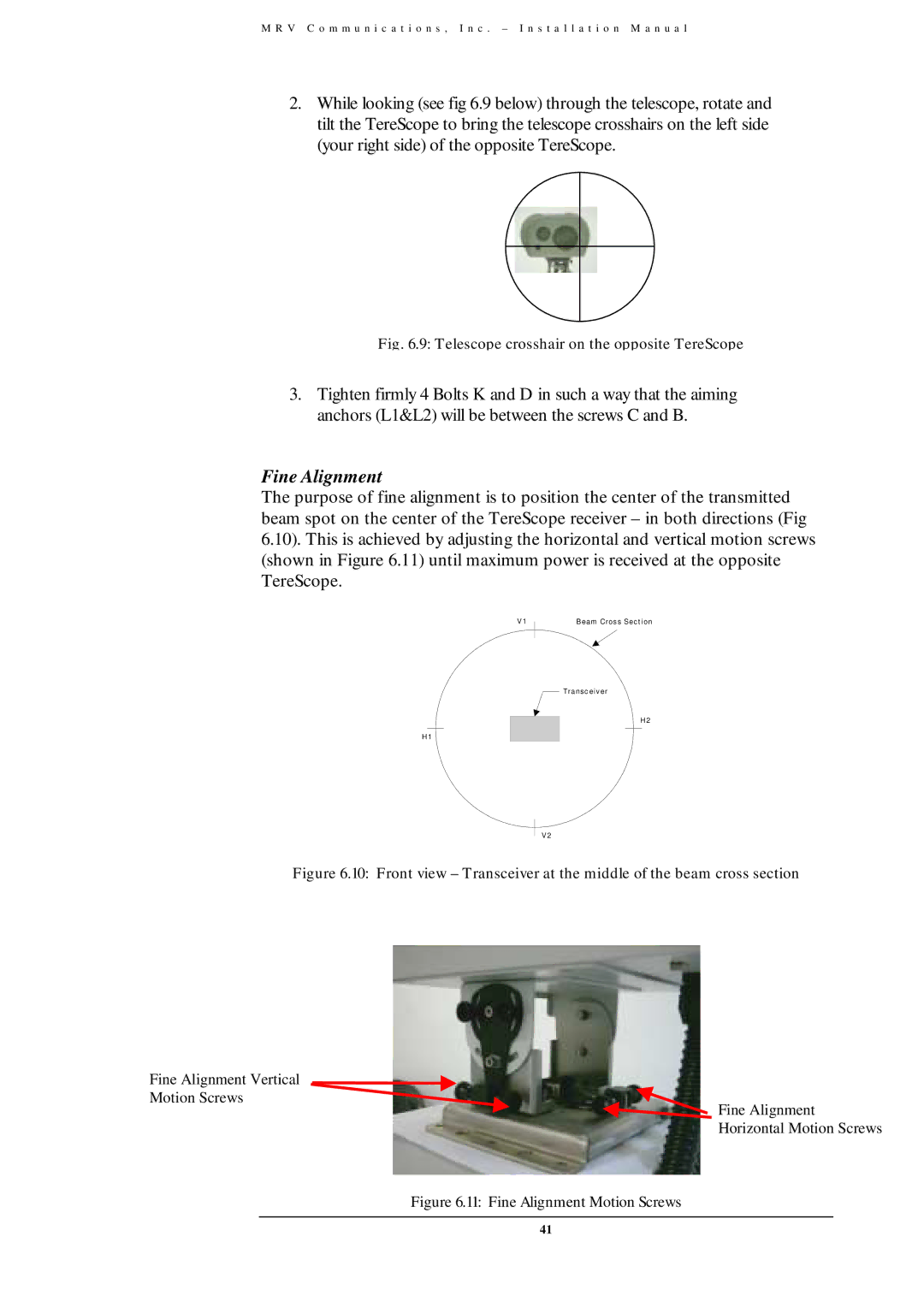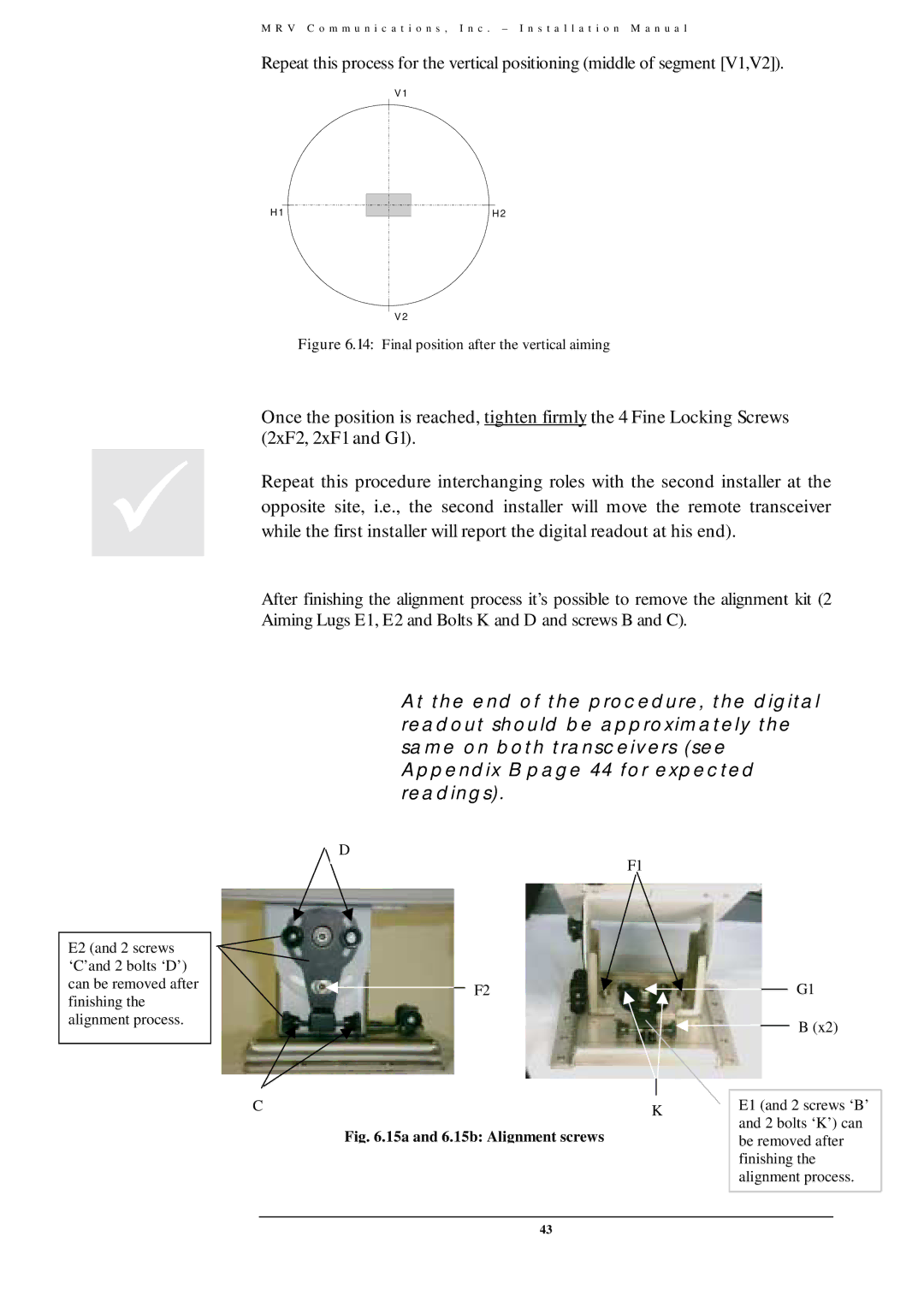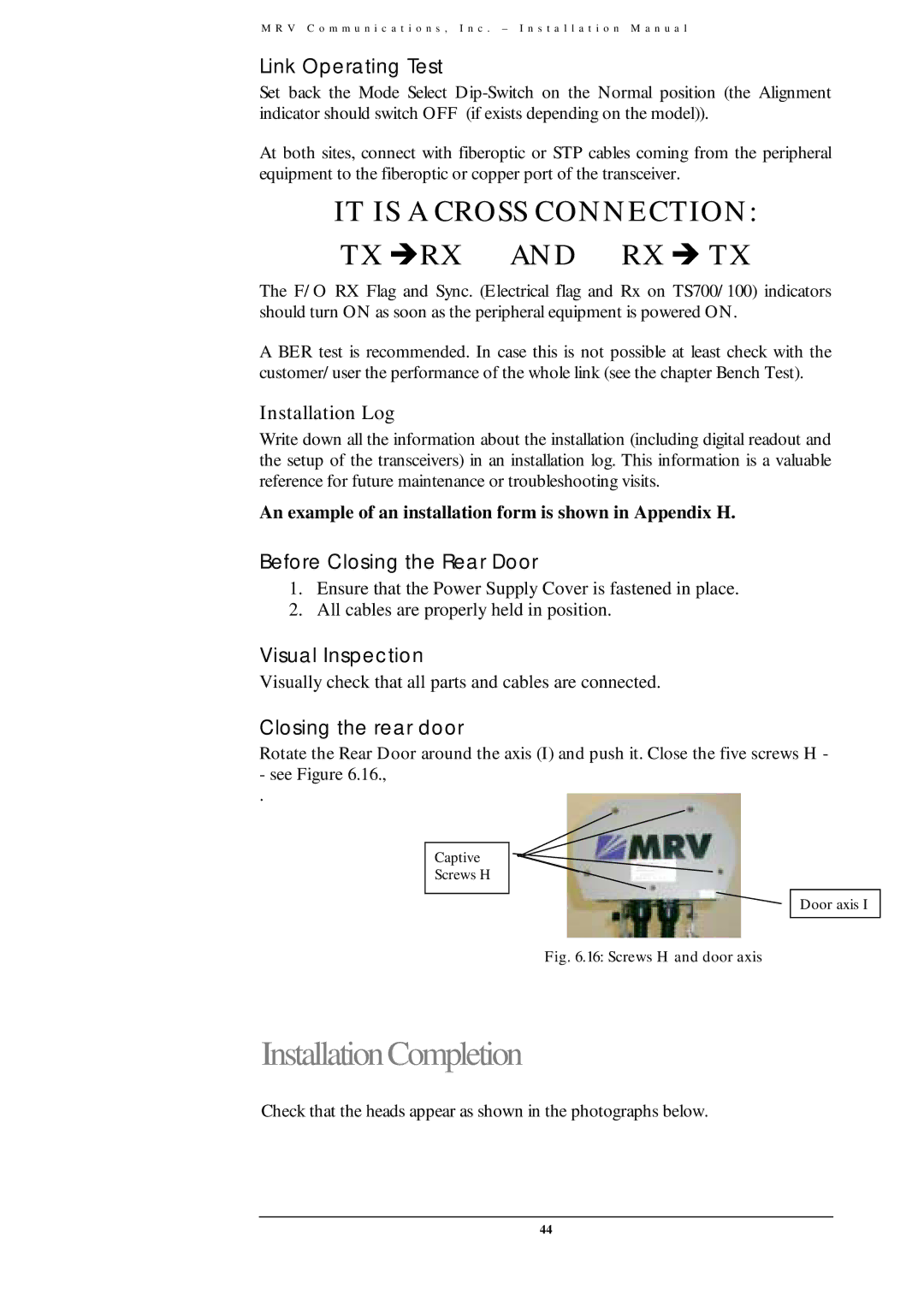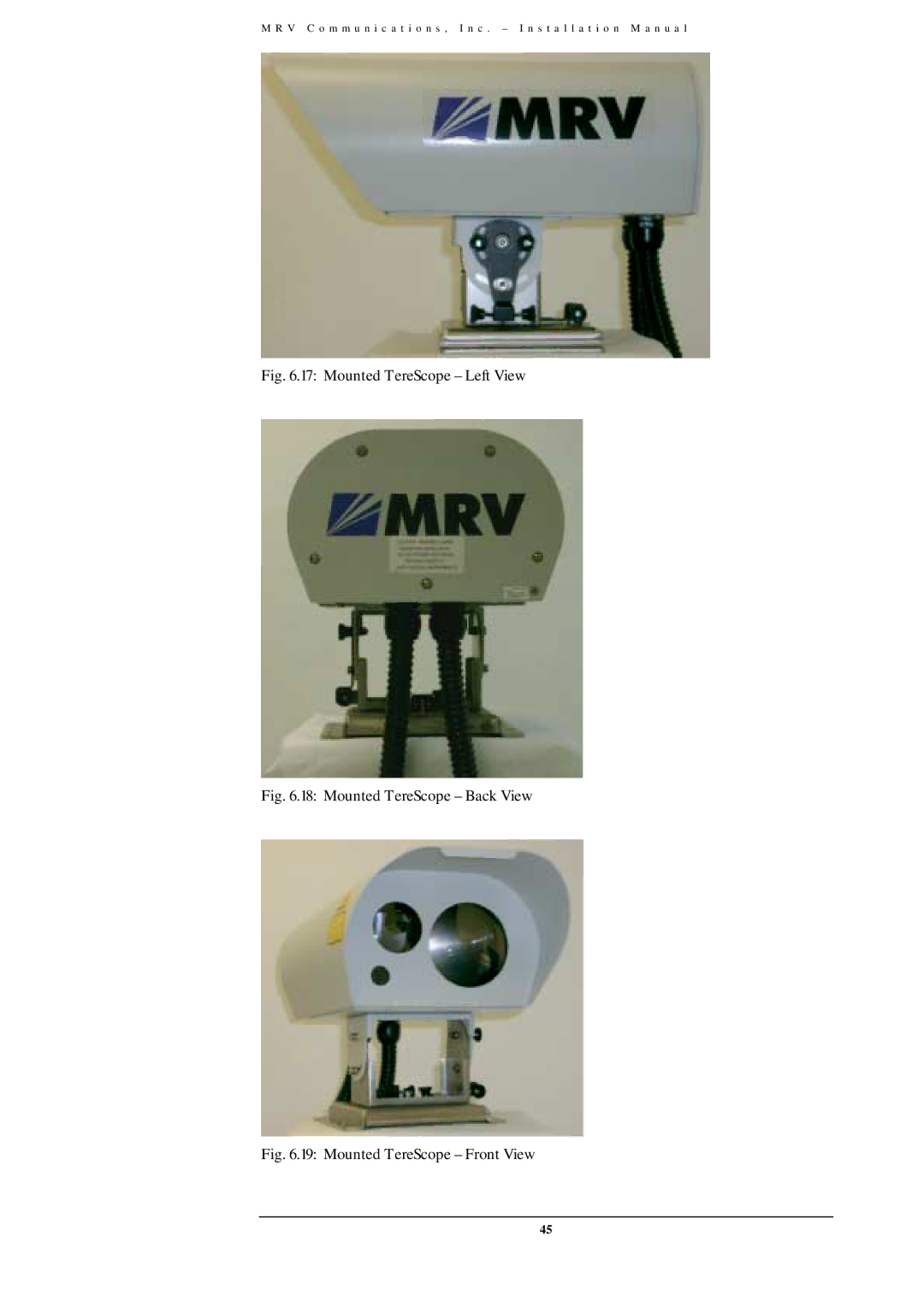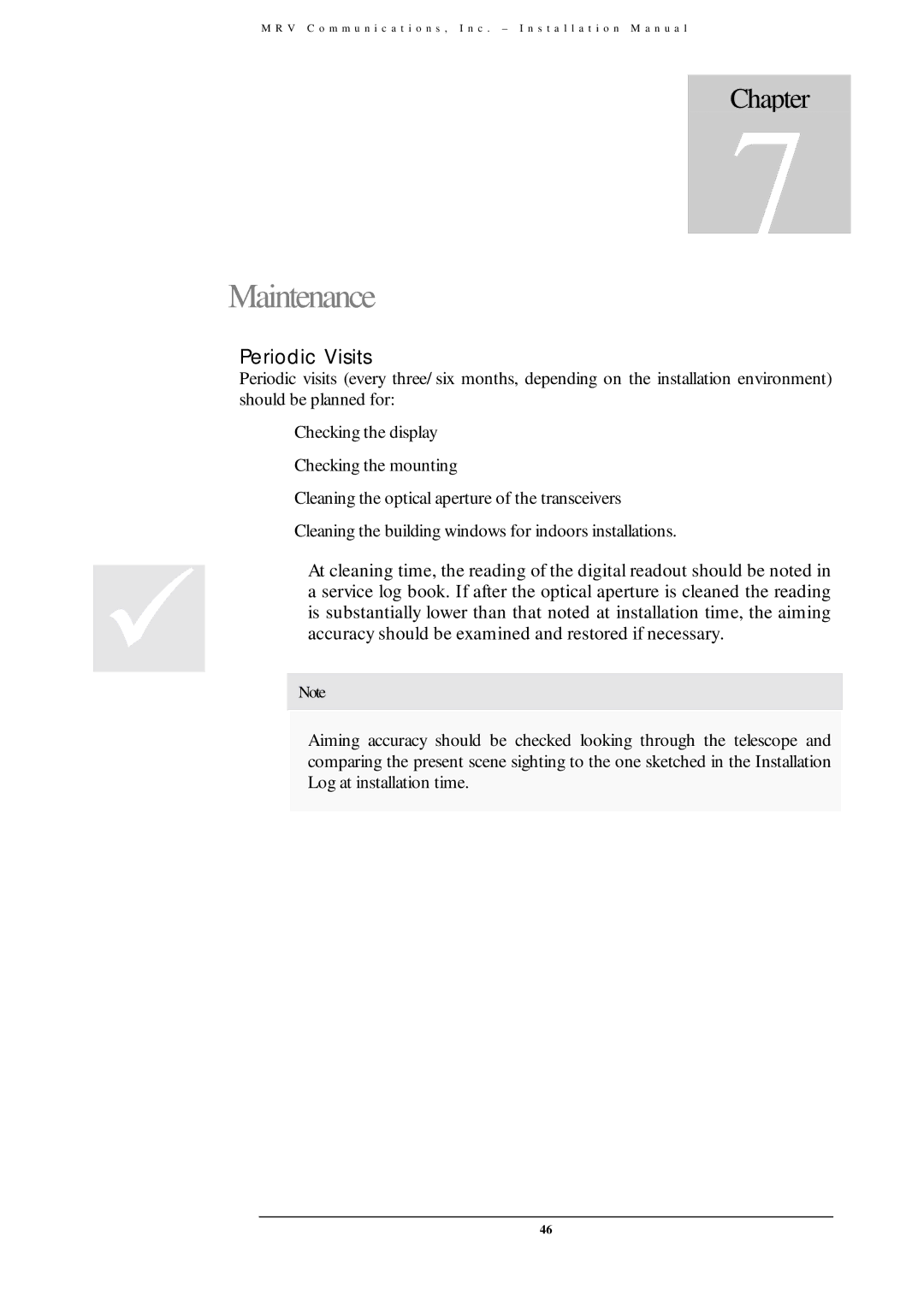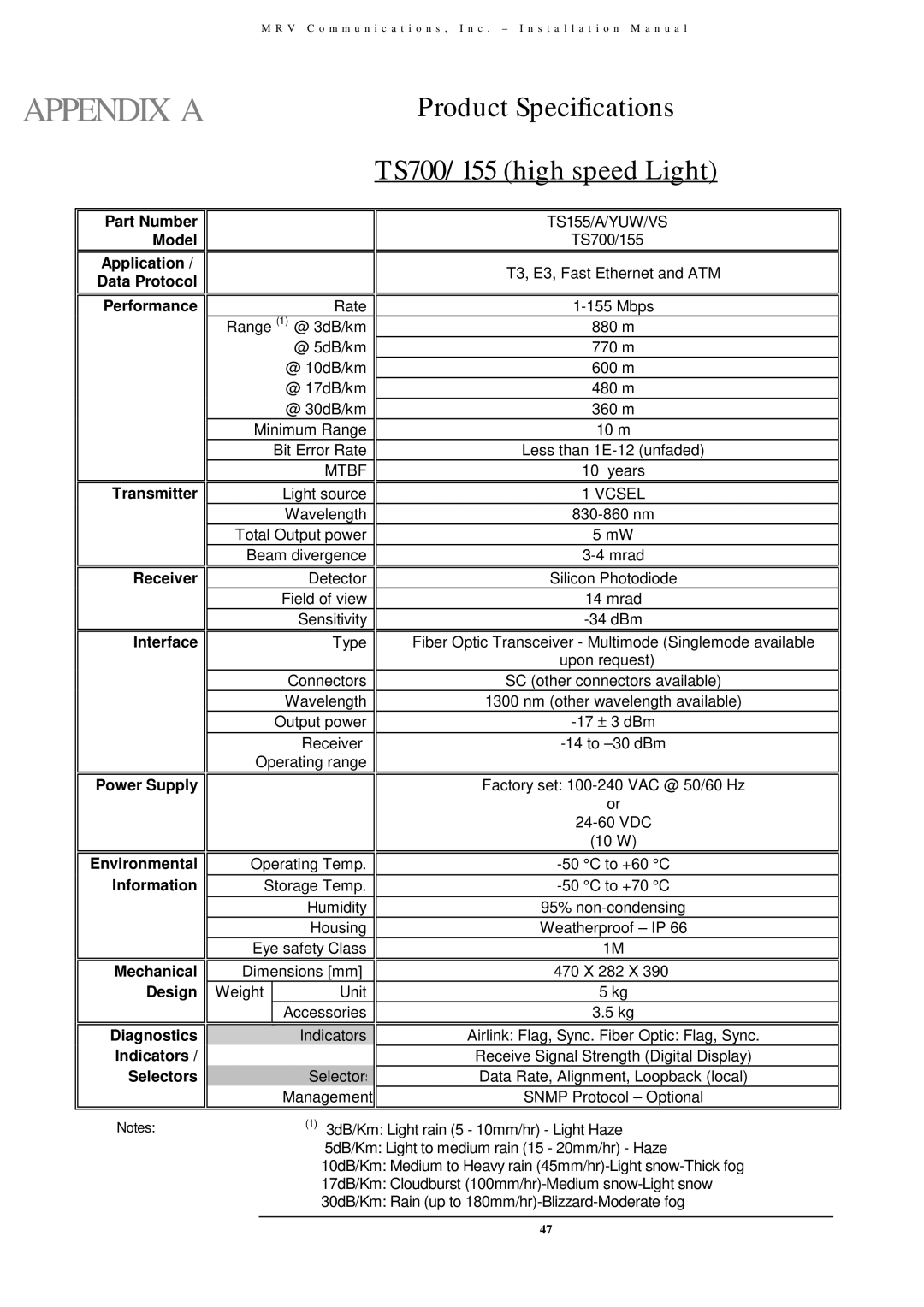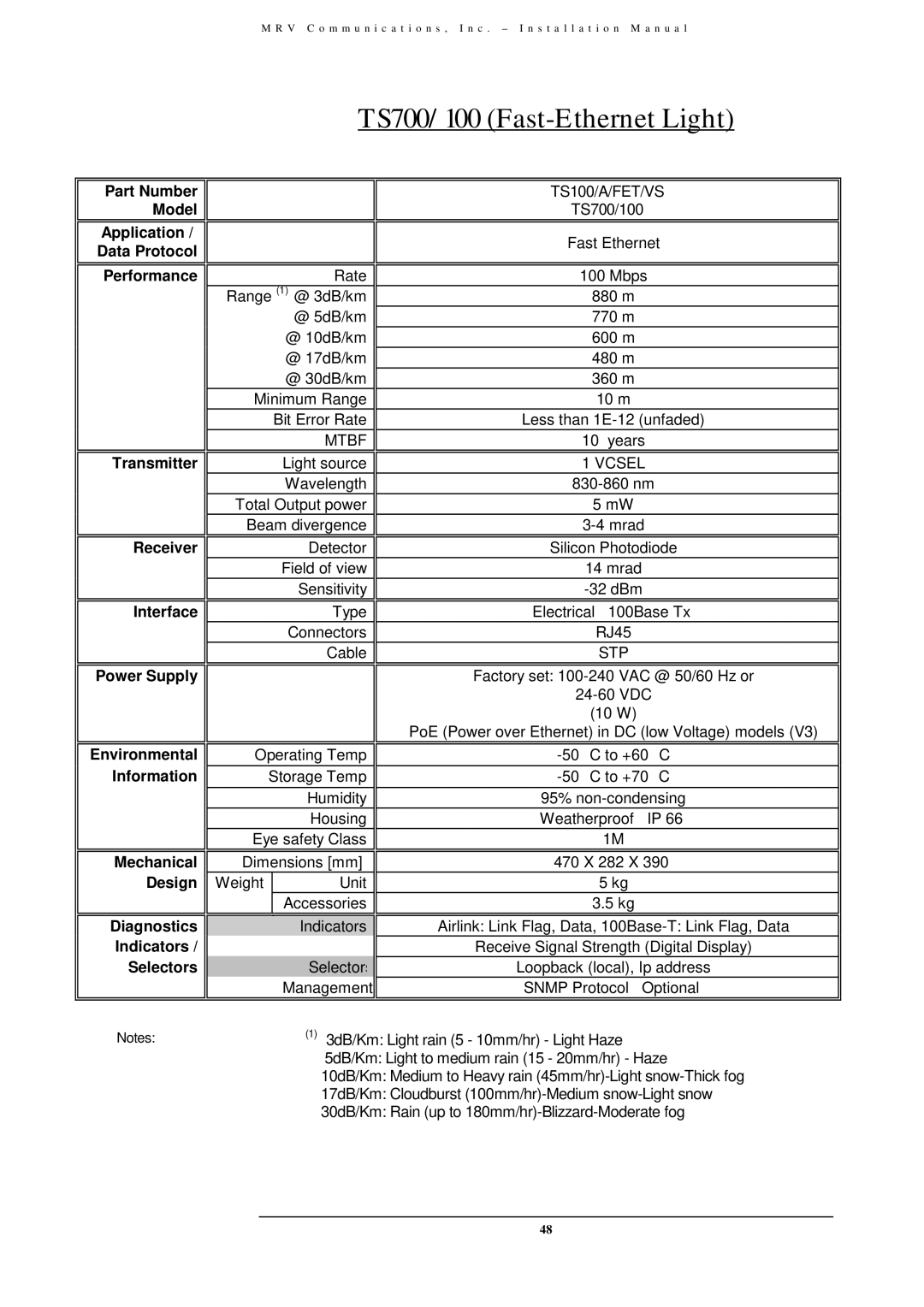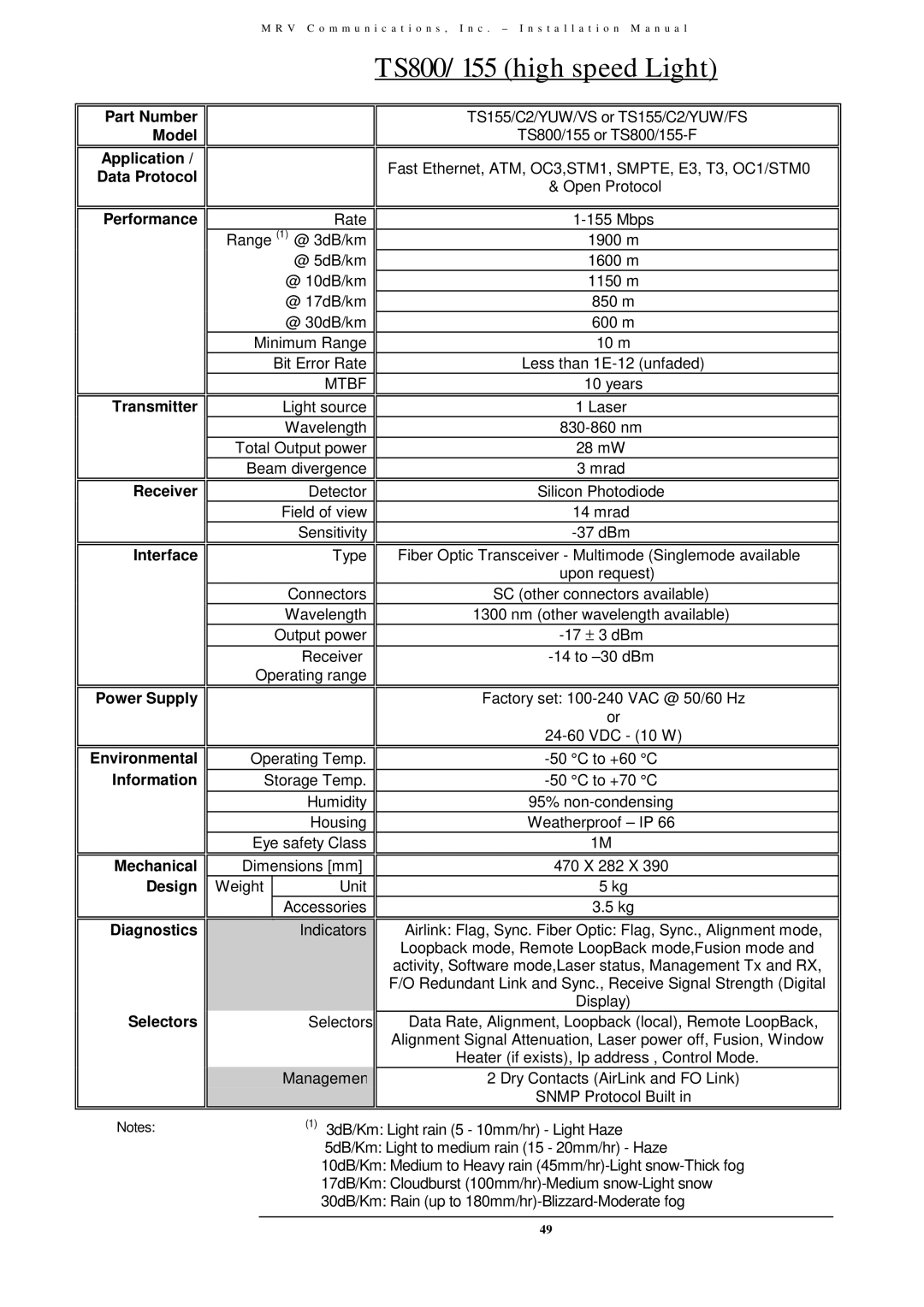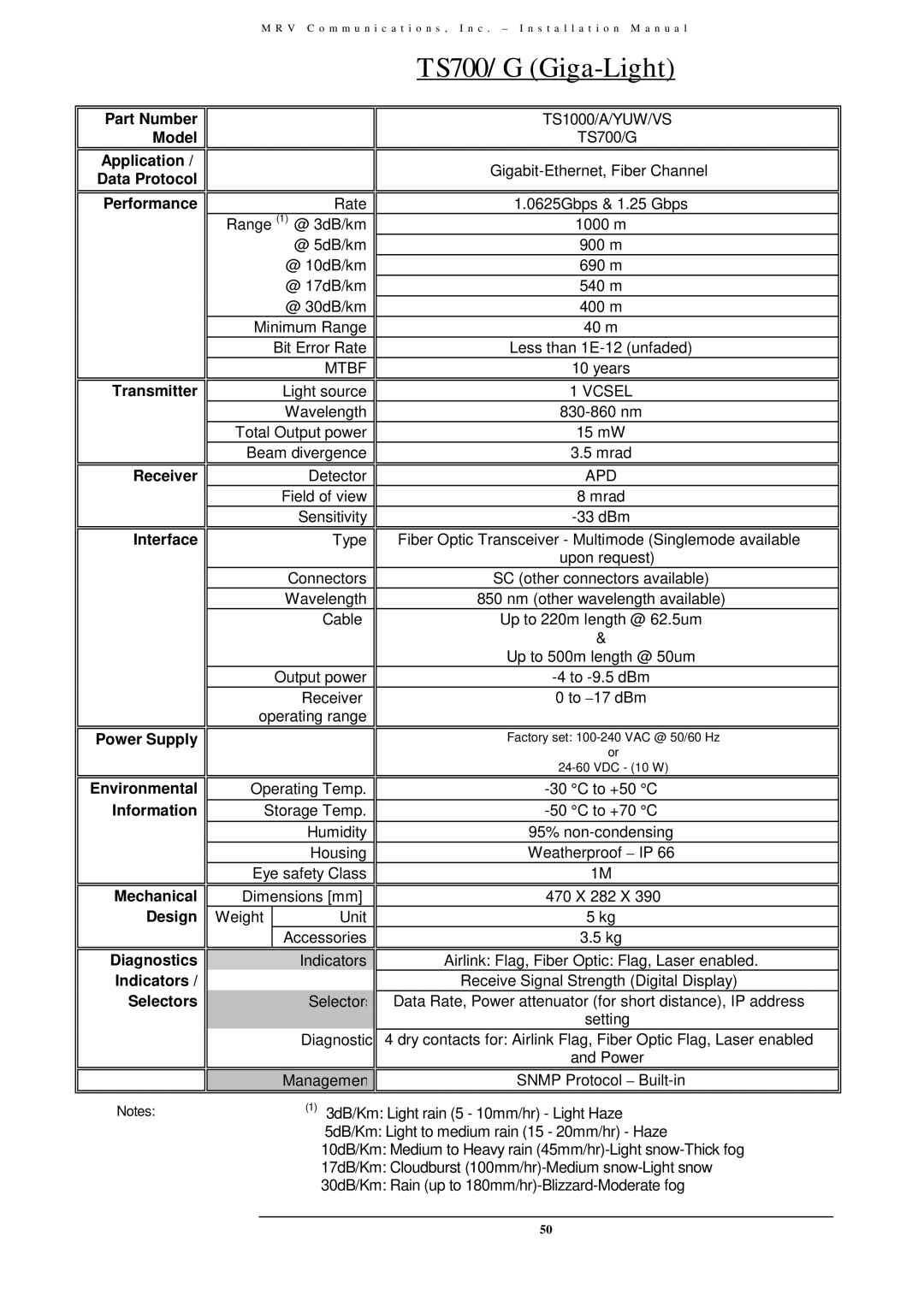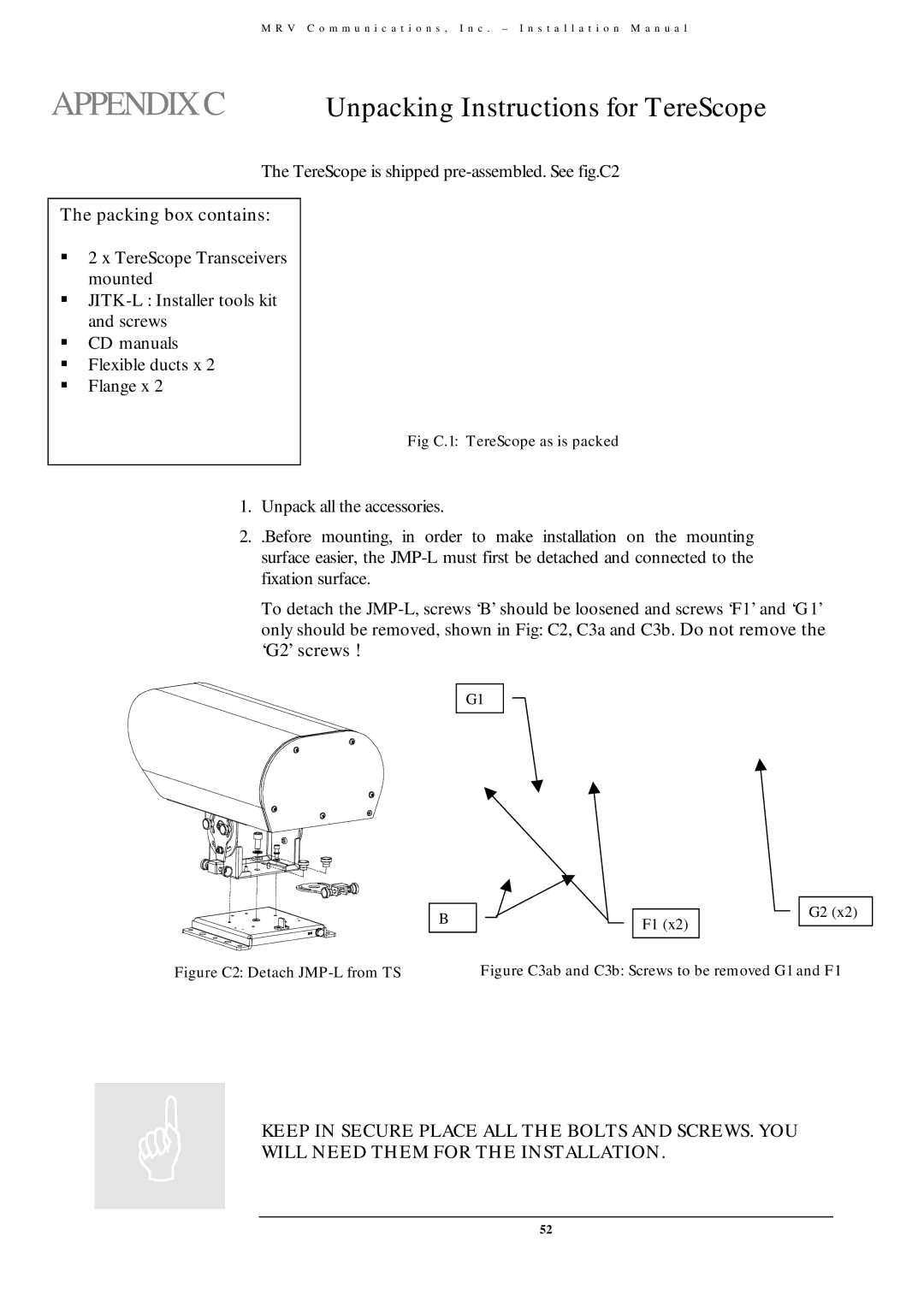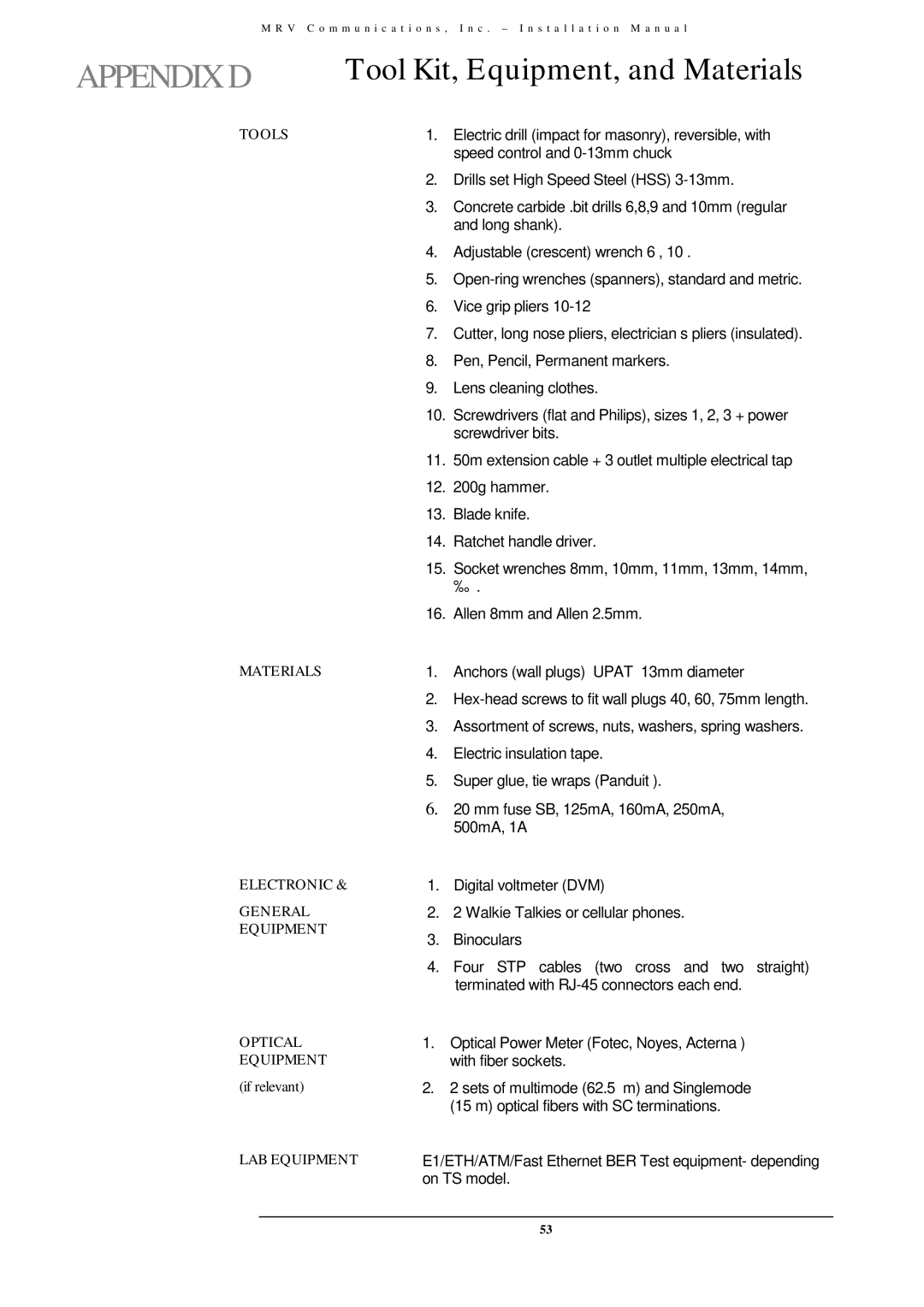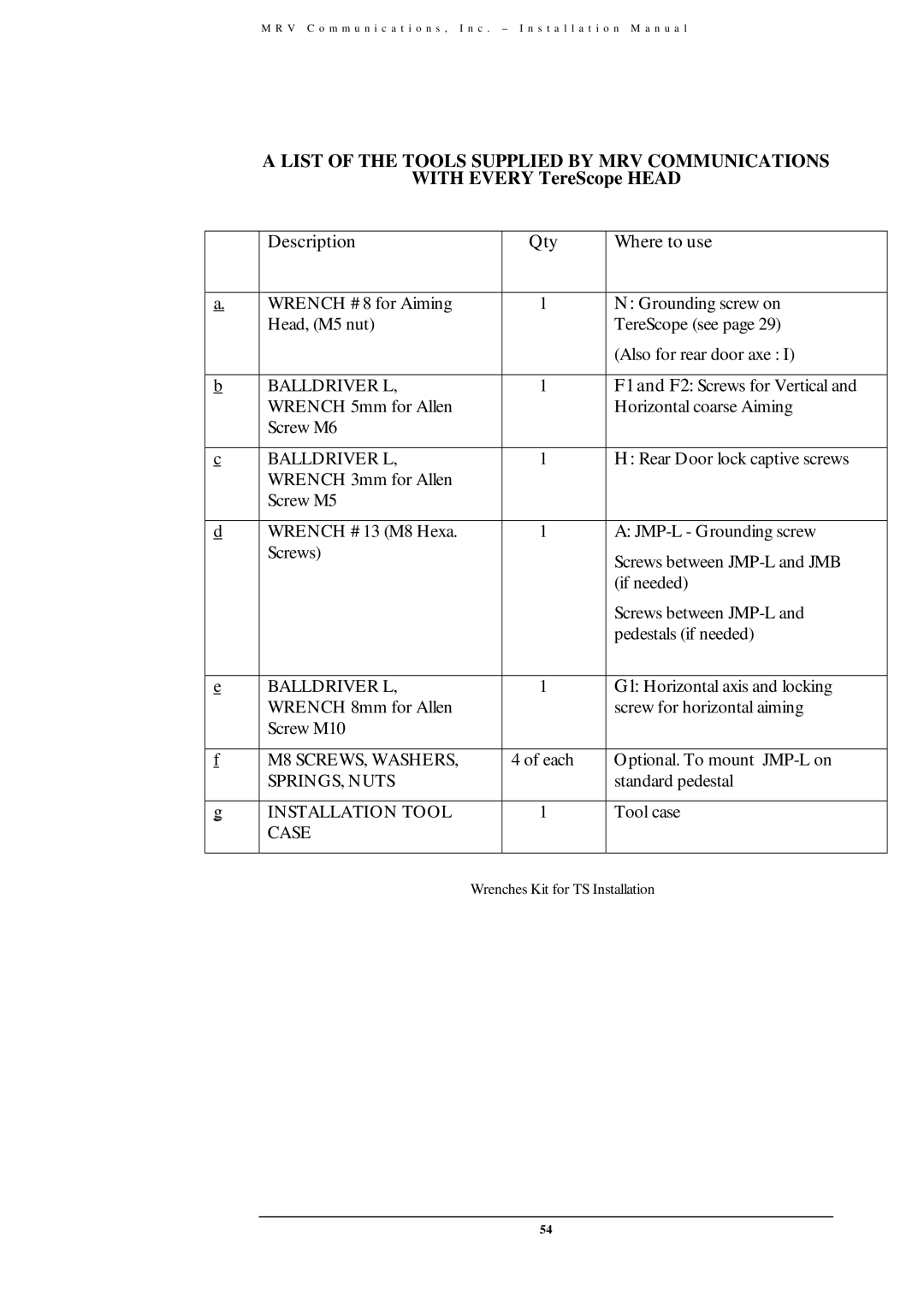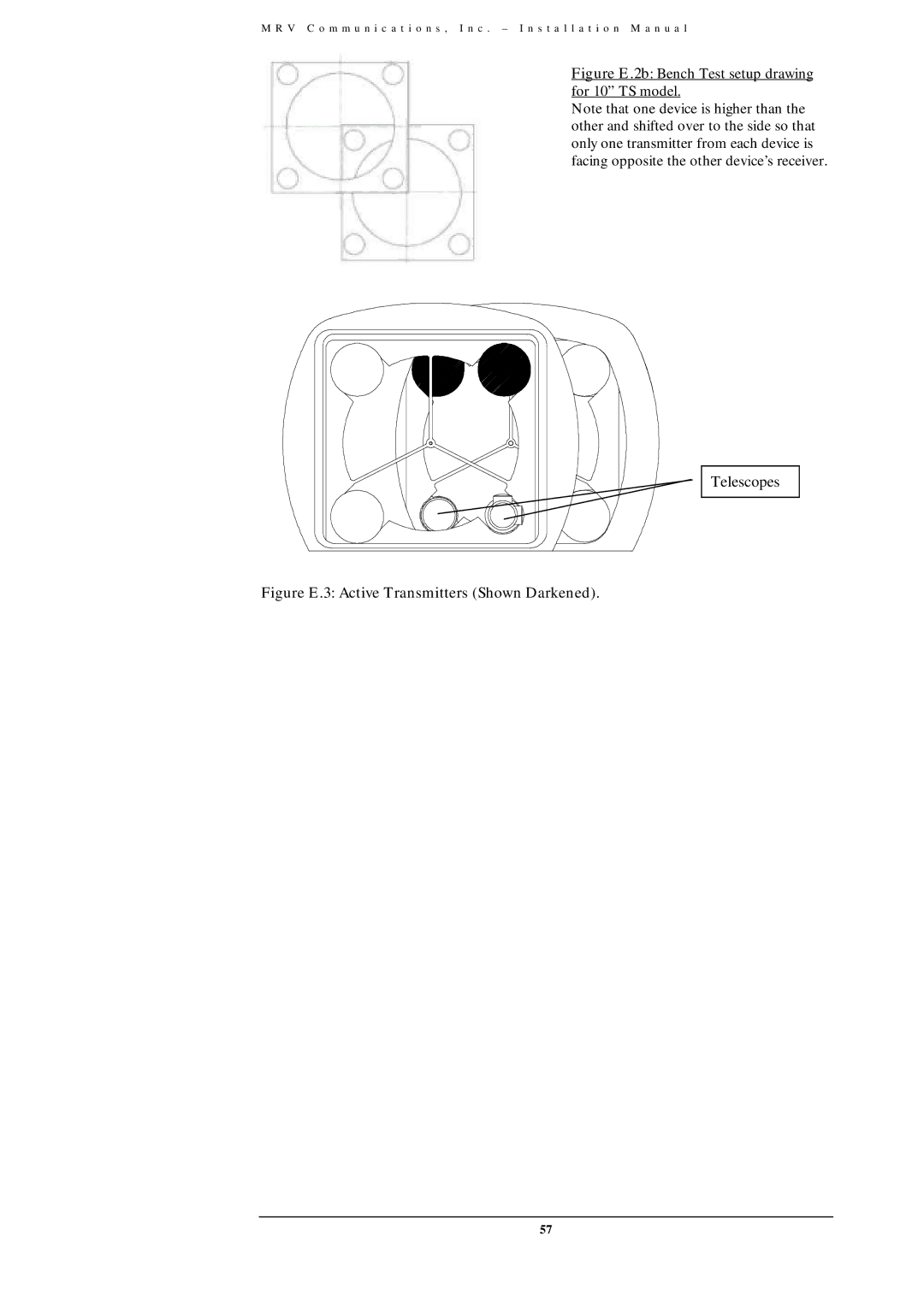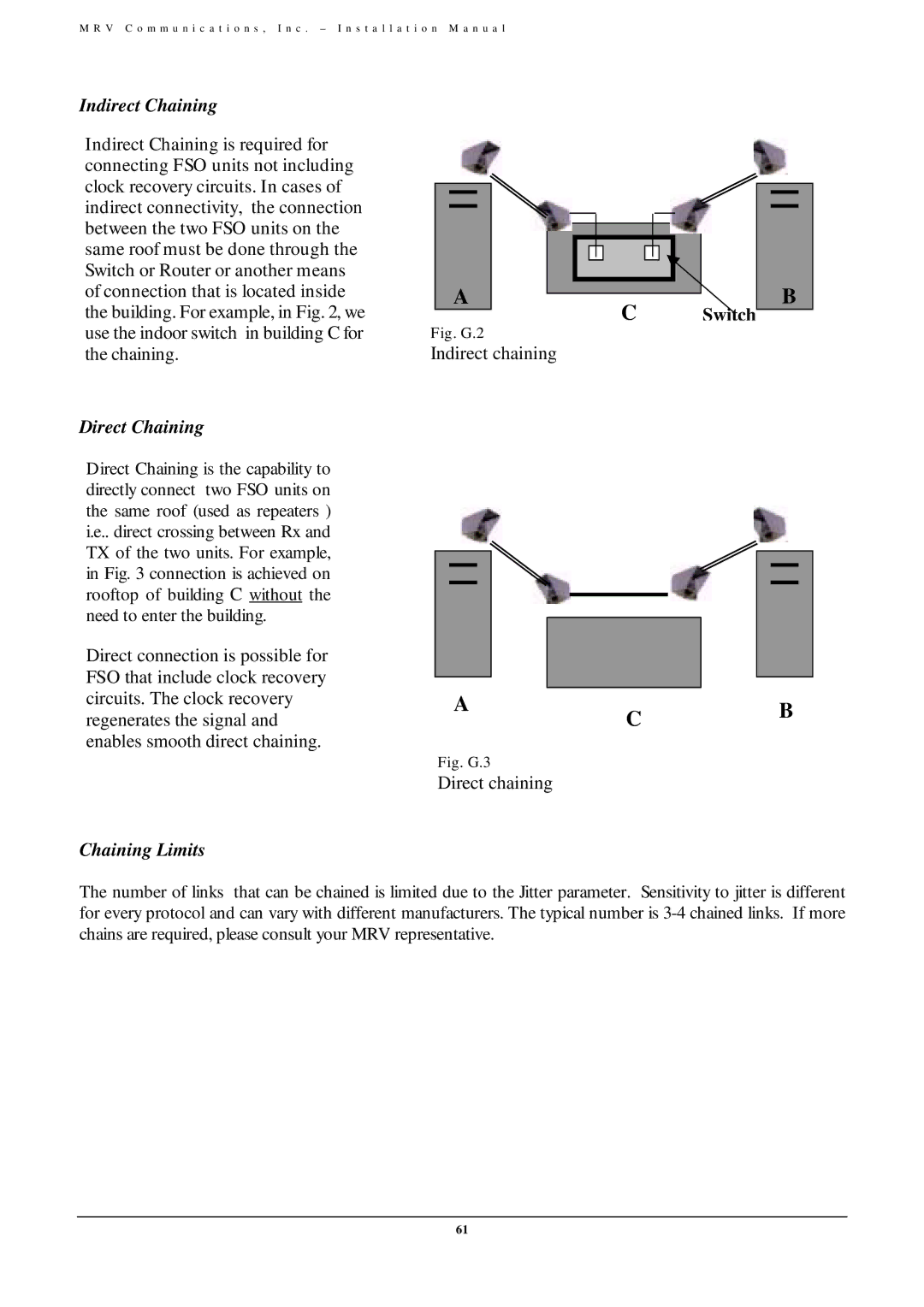
M R V C o m m u n i c a t i o n s , I n c . – I n s t a l l a t i o n M a n u a l
2.While looking (see fig 6.9 below) through the telescope, rotate and tilt the TereScope to bring the telescope crosshairs on the left side (your right side) of the opposite TereScope.
Fig. 6.9: Telescope crosshair on the opposite TereScope
3.Tighten firmly 4 Bolts K and D in such a way that the aiming anchors (L1&L2) will be between the screws C and B.
Fine Alignment
The purpose of fine alignment is to position the center of the transmitted beam spot on the center of the TereScope receiver – in both directions (Fig 6.10). This is achieved by adjusting the horizontal and vertical motion screws (shown in Figure 6.11) until maximum power is received at the opposite TereScope.
H1
V1
Beam Cross Section
Transceiver
H2
V2
Figure 6.10: Front view – Transceiver at the middle of the beam cross section
Fine Alignment Vertical
Motion Screws
![]() Fine Alignment
Fine Alignment
Horizontal Motion Screws
Figure 6.11: Fine Alignment Motion Screws
41
